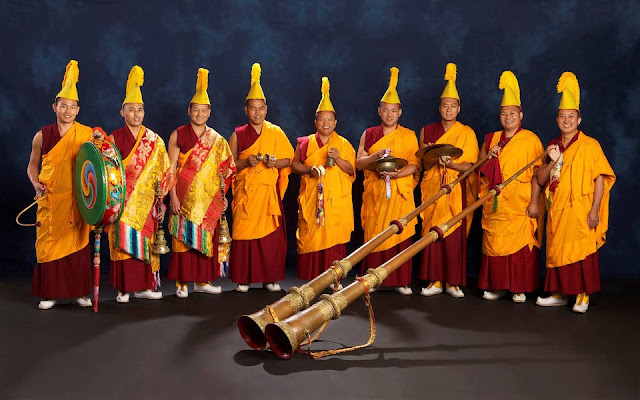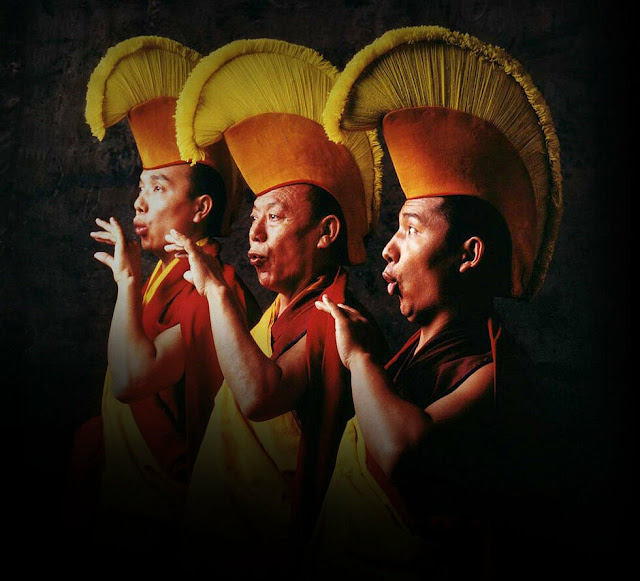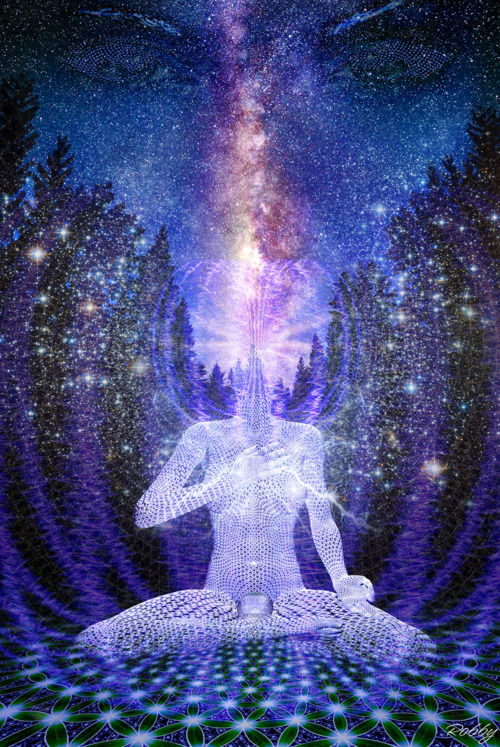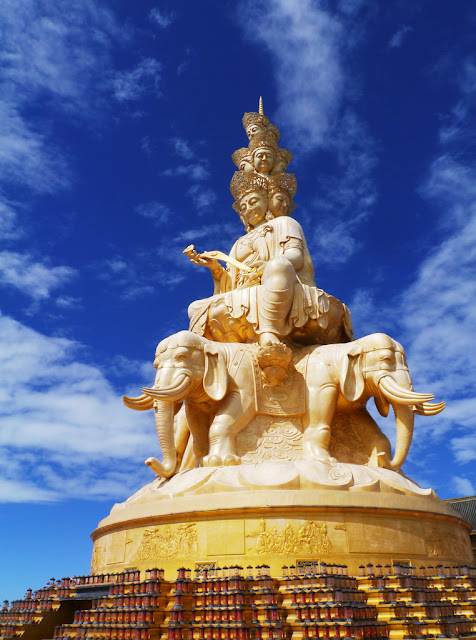A few facts of Tibet Nowadays
Modernization poses a new challenge for a new Tibet and herecomes with a price and the causes and effects of Urbanization and modernization of Tibet under People's Republic of China.
Tibet in recent decades is transformed beyond recognition. Modern Face of Tibet is in fact, modernization poses a new challenge for a new Tibet and herecomes with a price. What can we find true or real face of Tibet?
Pollution into the environment with new high rise apartment buildings, new highways, new railroads, new airports, new malls, business hotels, pubs and lounges, underground disco, KTV , alcohols, drug abuses , crime rate on the rise and diseases that easily find a place in Tibetan Soil.
STD and AIDS in Tibet autonomous region (TAR)
Tibet, one of the latest places in the world to be exposed to human immunodeficiency virus (HIV), is now becoming a place of high prevalence rate, according to some studies that have been kept low key where the first case was diagnosed in 2002.
While the number of HIV-positive Tibetans are going up yearly, many residents of major Tibetan regions in Gansu, Qinghai, Suchuan and Yunnan Provinces and the Tibet Autonomous Region do now know what AIDS is or realize it is fatal, said Chupal Sangpo, deputy director of an NGO in Sichuan dedicated in educating Tibetans about HIV.
At the end of 2015, new HIV cases in Tibet went down, while 77,000 people diagnosed as HIV-positive received treatment in the past 12 months.
Tibetan Buddhism is a religion in exile, forced from its homeland when Tibet was conquered by the Chinese. At one time it was thought that 1 in 6 Tibetan men were Buddhist monks. The best known face of Tibetan Buddhism is the Dalai Lama, who has lived in exile in India since he fled the Chinese occupation of his country in 1959.
Tibetan Buddhism combines the essential teachings of the Theravada and Mahayana Buddhism with Tantric and Shamanic, and material from an ancient Tibetan religion called Bon. Although Tibetan Buddhism is often thought to be identical with Vajrayana Buddhism, they are not identical - Vajrayana is taught in Tibetan Buddhism together with the other vehicles.
History
Buddhism became a major presence in Tibet towards the end of the 8th century CE. It was brought from India at the invitation of the Tibetan king, Trisong Detsen, who invited two Buddhist masters to Tibet and had important Buddhist texts translated into Tibetan.
First to come was Shantarakshita, abbot of Nalanda in India, who built the first monastery in Tibet. He was followed by Guru Rinpoche Padmasambhava, who came to use his wisdom and power to overcome "spiritual" forces that were stopping work on the new monastery.
The Groups within Tibetan Buddhism
1) Nyingmapa: Founded by Guru Rinpoche, Padmasambhava, this is oldest sect, noted in the West for the teachings of the Tibetan Book of the Dead.
2) Kagyupa: Founded by Tilopa (988-1069), the Kagyupa tradition is headed by the Karmapa Lama. Important Kagyupa teachers include Naropa, Marpa, and Milarepa.
3) Sakyapa: Created by Gonchok Gyelpo (1034-1102) and his son Gunga Nyingpo (1092-1158).
4) Gelugpa: (The Virtuous School) Founded by Tsong Khapa Lobsang Drakpa (also called Je Rinpoche) (1357 - 1419), this tradition is headed by the Dalai Lama.
In addition, Tibetan is widespread as a liturgical language throughout the Tibetan Buddhist cultural area. Tibetan culture and language are today under strong pressure. Tibet has today the status of an autonomous region (TAR) in the People’s Republic of China. The number of Tibetans living in China is disputed. According to official Chinese statistics, the number is between 4 to 5 million, and under half of these live in the TAR, while the rest are found in other Chinese provinces.
Somewhat more than 100,000 Tibetans live in South Asia, primarily in India, and in the West. According to the Tibetan Government in Exile, the total number of Tibetans is approximately 5 - 6 million. Tibetan Buddhism is a strong and living religious tradition in Tibetan areas in China and parts of neighboring countries.
Together with Zen Buddhism, Tibetan Buddhism is the Buddhist movement which has spread more widely in the West. Buddhism came to Tibet in the 7th century A.D., first and foremost from India. It assimilated local religious traditions and became what we call Tibetan Buddhism. The Tibetans adopted an Indian alphabet in order to translate Buddhist texts and for practical purposes in the country's administration, and is still used today.
Buddhism was transmitted into Tibet mainly during the 7th to 10th centuries. Notable early teachers were the illustrious 8th-century Tantric master Padmasambhava and the more orthodox Mahayana teacher Shantirakshita. With the arrival from India in 1042 of the great teacher Atisha, a reform movement was initiated, and within a century the major sects of Tibetan Buddhism had emerged.
The Dge-lugs-pa, or One of the Virtuous System, commonly known as the Yellow Hats ( The Gelupa lineage ) the order of the Dalai and the Panchen Lamas, was the politically predominant Tibetan sect from the 17th century until 1959, when the hierocratic government of the Dalai Lama was abolished by the People’s Republic of China.
Much of the Buddhist literature that was lost in India exists today in Tibetan translations, and Tibetan is therefore one of the important languages in the study of Buddhism. Since the 11th century, Tibetans have also composed their own Buddhist literature, which consists of historical, biographical and liturgical texts, commentaries, meditational texts, poetry, grammar and philosophy and, since the twentieth century, also secular literature, which comprises poetry, novels and short stories.
In the second half of the 20th century Tibetan Buddhism spread to the West, particularly after the subjugation of Tibet to Chinese Communist rule sent many refugees, including highly regarded “reincarnated lamas,” or tulkus, out of their homeland. Tibetan religious groups in the West include both communities of refugees and those consisting largely of Westerners drawn to the Tibetan tradition.
Thank you for reading, may you find peace and great bliss. With your support it helps to spread the Buddha’s precious teachings and turning the Dharma wheels in the world.
Aspiration For Bodhichitta
For those in whom the precious Bodhichitta has not arisen
May it arise and not decrease
But increase further and further.
Dedication of Merit
By this merit may we obtain omniscience then.
Having defeated the enemies wrong-doings.
May we liberate migratory from the ocean of existence.
With its stormy waves of birth, old age, sickness and death.
*Note
I do not own or infringe any copyright of the picture(s).
Picture(s) courtesy and credit to the rightful distributors and or studios.
Picture(s) is/are intended for editorial use only.


















































